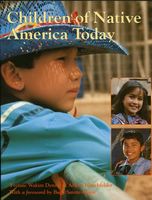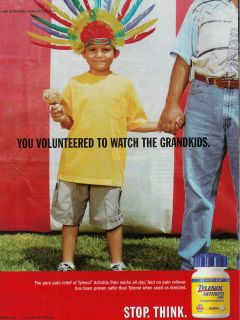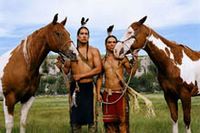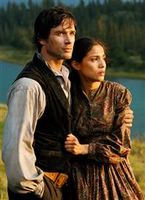What did you learn in school about Indians? Not much? Or at least not much that was accurate? That could be changing.

The
Cradleboard Teaching Project, a revolutionary new curriculum started by Indian musician and singer
Buffy Sainte-Marie, is working to address that problem:
"The Cradleboard Teaching Project turns on the lights in public education about Native American culture - past, present, and most important for the children - the Future. It comes out of Indian country, and reaches far beyond, into the mainstream classroom and into the future of education.

"Backed by lesson plans and an excellent curriculum, the Cradleboard Teaching Project is also live and interactive, and totally unique; children learn with and through their long-distance peers using the new technology alongside standard tools, and delivering the truth to little kids with the help of several American Indian colleges. Cradleboard reaches both Indian and non-Indian children with positive realities, while they are young."
From their FAQ: What are the Problems that Cradleboard is designed to remedy?-
Native American people suffer from being misperceived all their lives because of the lack of accuracy in the mainstream. Native American reality is virtually invisible to ourselves and our peers and the parents of our peers. Any child whose concept of self identity must depend upon what’s reflected as Native American in the world of school and media will come up empty. It’s like looking in the mirror with a group of friends and having everybody reflected but yourself.

- Native American children don’t see anybody on television or at the movies with whom they can identify. They have no visibility and no impact.
Meanwhile their innocent non-Indian peers celebrate a Broadway-style Pocahontas who sings like a showgirl and dances with pink bunnies. What is a Native American child to do? Most Native American children don’t know anybody who lives like “Dances with Wolves” any more than a non-Indian child knows anybody who lives like Mary Poppins.
-
Statistics show that the same inaccurate, stereotypical curricula about Native peoples that hurt Native Americans also produce Mainstream adults with inaccurate or negative views about Indians. When a Native American child grows up, he and she will have to deal with both sides of this dilemma: absence of a strong self concept and inaccurate perceptions from others.
- Lack of enriching, accurate information about Native American people and cultures are in part to blame for our having the highest depression and suicide rates in the country.
Leading up to this fact are high rates of school drop-out, concomitant high unemployment, welfare dependency, substance abuse, and rates of poverty.Actually sounds like something everyone could use, not just school kids.


 - Native American children don’t see anybody on television or at the movies with whom they can identify. They have no visibility and no impact.
- Native American children don’t see anybody on television or at the movies with whom they can identify. They have no visibility and no impact.  Take a moment and look at the ad to your left. Grandparent. Child. Ice cream cone. Colored chicken feather "Indian" head dress. Major pharmaceutical product.
Take a moment and look at the ad to your left. Grandparent. Child. Ice cream cone. Colored chicken feather "Indian" head dress. Major pharmaceutical product.

 Someone in
Someone in

